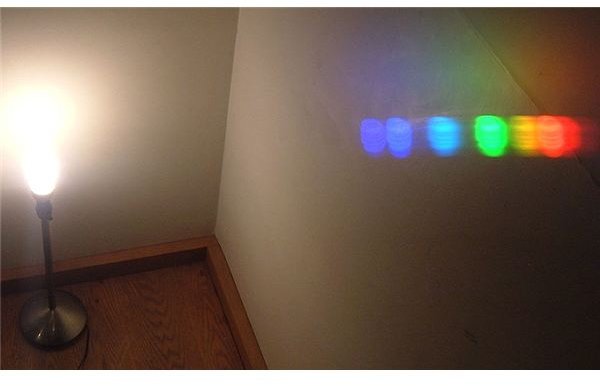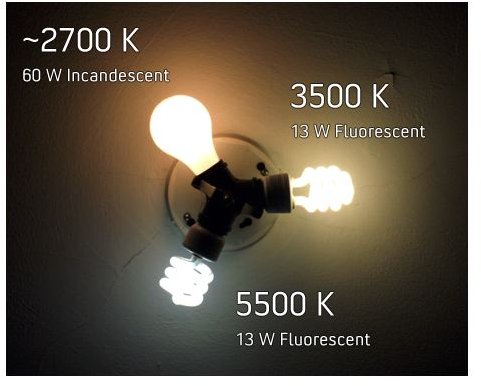What Consumer Grade Light Bulbs are most like the Sunlight Spectrum?
What are Full Sunlight Spectrum Bulbs?
Full spectrum light bulbs are designed to emit light corresponding mainly to the visible portion of the solar spectrum. In order to have a more accurate reproduction of the sunlight spectrum, these lamps need to produce infrared and ultraviolet light as well.
In practice, however, no lamp can accurately reproduce the sunlight spectrum. Neither the continuous wavelength spectrum, nor the intensity of each wavelength, can be matched exactly. However, the artificial light of some bulbs can resemble the natural balanced light and have the same beneficial effect on humans.
Color Rendering Index (CRI) and the Color Temperature
The CRI or Color Rendering Index is a measure of the bulb’s ability to reproduce the colors of an object in comparison to the colors observed in natural light. This ability is measured with an index rating ranging from 0 to 100, where the value 100 corresponds to the color rendering of sunlight. A bulb with a minimum of 90 CRI is thought to reproduce sunlight quite satisfactorily.
The Color Temperature is another quantitative measure indicating the type of spectrum. For the solar spectrum the temperature is T = 5800K and a bulb of 5500K is thought to be an excellent full spectrum light bulb.
Different Types of Sunlight Lamps
As discussed above, full sunlight bulbs cannot reproduce the exact sunlight spectrum. However, there are available commercial bulbs that approximate this spectrum to a very satisfactory degree.
Although incandescent light provides us with a smooth and continuous spectrum, a 100 Watt standard incandescent bulb has a color temperature of only 2850K with a high proportion of yellow and red color. A type of incandescent bulb coated with neodymium is marketed as sunshine lamp, although the color temperature is far less than the limit of 5000K. However, it is important to note that the visual spectrum of the human eye does not fit the solar spectrum. So, these lamps may actually be beneficial, although not matching the sunlight.
Compact Fluorescent Lamps or CFLs are more versatile. They are available in a wide range of temperatures reaching the values of 5000 and 6000K as well. Fluorescent lamps display continuous spectra combined with discrete lines or spikes. The availability of such a wide range of CFLs is due to the mix of phosphors inside the tube. Each of them emits a discrete color, thus the addition of extra phosphors increases the CRI of the lamp (~80) along with its price.
LEDs can also be used to mimic the natural sunlight through a device called the “LED solar simulator.” Although LED technology is very promising, no real market exists on this area yet.
Other types of lamps, such as the Mercury-Vapor lamps and High Intensity Discharge lamps (HID), may have good color temperature but their light spectrum appears fractured.
Comparison of an Incandescent and Two Fluorescent Bulbs of Different Temperatures or Colors
Benefits of Full Sunlight Lamps
But is there any need for full sunlight lamps? The use of full spectrum lightning has a range of benefits, as claimed by the manufactures and possibly other supporters of this technology. The degree of these benefits depends on the manufacturing quality and the matching degree to the solar spectrum:
- People that suffer from SAD or Seasonal Affective Disorder, find overcast days and low intensity light extremely depressive. These people are in need of light therapy in order to help them feel more energetic and vigorous. Sunlight lamps are thought to improve a condition like this.
- Full spectrum lightning is believed to be beneficial when used in workspaces, offices and other close spaces, since it can increase an individual’s productivity and effectiveness
- It reduces eyestrain, headaches, and stress, especially during studying or performing another similar task.
- It is used in museums, art galleries and similar places where color discrepancies are very important in enhancing the aesthetic effect of the art works being displayed.
The Spectrum of a Compact Fluorescent Bulb

How to Choose a High Quality Sunlight Spectrum Bulb
The quality of such bulbs is highly dependent on the manufacturing company. When choosing full spectrum bulbs, their specifications should be thoroughly examined. First of all, the lighting design engineer (or the consumer) must pay attention to the spectrum graph of the lamp. The spectrum must be as continuous as possible, without any discontinuities or spikes on the line of the spectrum graph. These lamps also emit infrared and ultraviolet wavelengths, which should be blocked by protective filters, in order to be safe for commercial use.
Finally, the inexpensive and very popular “cool white” bulbs have low values of CRI and color temperature. They are not true full spectrum light bulbs and can cause eyestrain problems.
Sources:
- “Electromagnetic Spectra of Light Bulbs”, L.D.Roper & M. Rosenzweig
- www.sunalux.com
- Spectral Power Distribution Curves, GE Lighting
- Color Temperature, Cyber College Internet Campus
